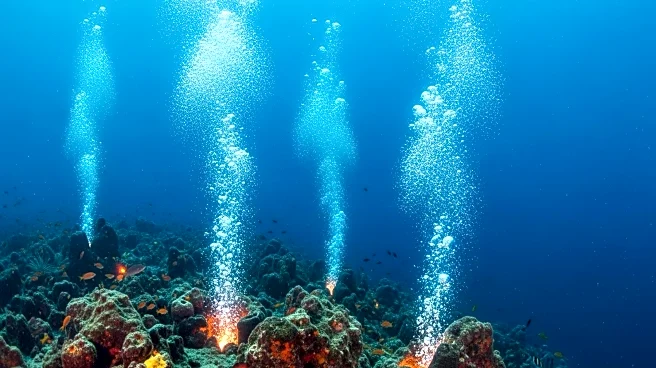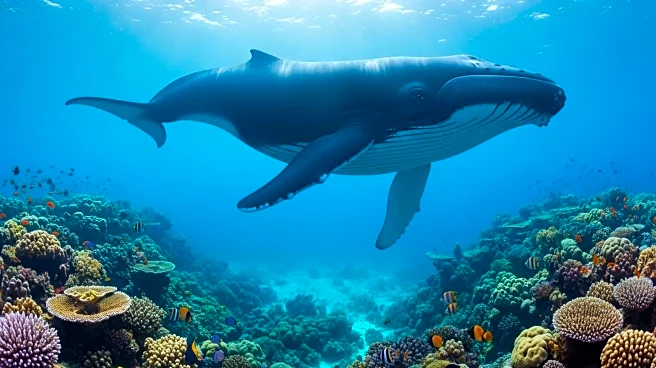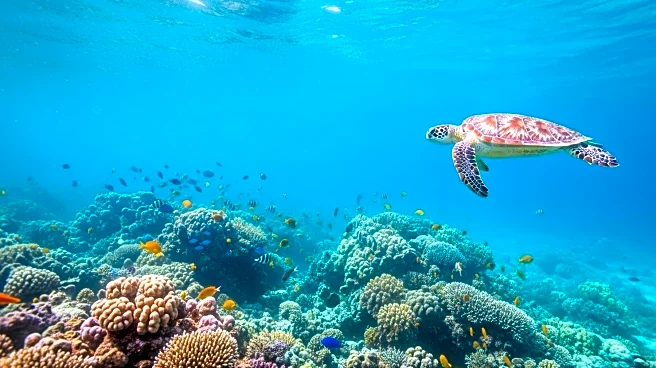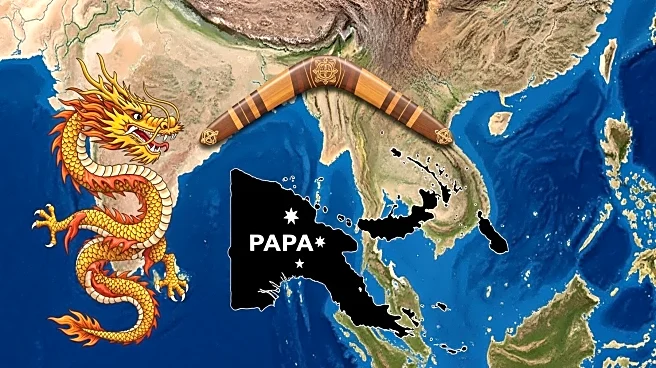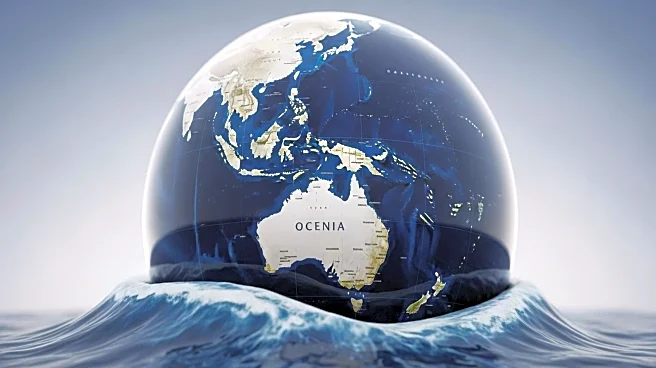What's Happening?
An international research team led by the GEOMAR Helmholtz Center for Ocean Research Kiel has discovered a unique hydrothermal system off the coast of Papua New Guinea. This system, located at the Karambusel field, features hydrothermal vents and methane seeps occurring side by side, a phenomenon not previously documented. The discovery was made during an expedition aboard the research vessel SONNE, revealing a hybrid environment that supports a diverse range of marine life.
Why It's Important?
This discovery is significant for both geological and biological research, offering new insights into the development of deep-sea ecosystems. The unique combination of hydrothermal vents and methane seeps creates a habitat for a variety of species, some of which may be previously unknown. Understanding these environments can enhance our knowledge of marine biodiversity and the processes that sustain life in extreme conditions. Additionally, the presence of precious metals in the area highlights potential economic interests, which must be balanced with conservation efforts.
What's Next?
Further research is needed to fully understand the ecological and geological dynamics of the Karambusel field. Scientists are calling for targeted marine spatial planning and protection measures to preserve this unique ecosystem. There is also a need for more detailed studies to identify and describe the species inhabiting this environment. The findings could influence future policies on marine conservation and resource management in the region.
Beyond the Headlines
The discovery raises concerns about the impact of human activities, such as mining, on fragile marine ecosystems. The potential for economic exploitation of the area's resources must be carefully managed to prevent environmental degradation. This situation underscores the importance of international cooperation in protecting marine biodiversity and ensuring sustainable use of ocean resources.

